#pharma drugs
Explore tagged Tumblr posts
Text
Carboxymethylcellulose 1% with SOC Eye Drops
Dry eyes, irritation, and discomfort are common problems affecting people of all ages, often caused by prolonged screen time, environmental factors, or medical conditions. Carboxymethylcellulose (CMC) 1% with SOC Eye Drops is a widely used solution for alleviating these symptoms. Known for its lubricating and protective properties, this formulation has become a go-to treatment for many ophthalmologists and patients alike.
#Carboxymethylcellulose 1% with SOC Eye Drops#Dry eyes#irritation#zexus pharma#dry eye syndrome#ZEXTEARS Gel Eye Drops#pharma drugs#ophthalmic lubricants#dry eye disease#best 10 eye drops pcd pharma companies#high quality eye care products#Soothes Irritated Eyes#Relieves Dry Eye Symptoms#Improves Tear Film Stability
0 notes
Text
"The Biden Administration last week [early December, 2023] announced it would be seizing patents for drugs and drug manufacturing procedures developed using government money.
A draft of the new law, seen by Reuters, said that the government will consider various factors including whether a medical situation is leading to increased prices of the drug at any given time, or whether only a small section of Americans can afford it.
The new executive order is the first exercise in what is called “march-in-rights” which allows relevant government agencies to redistribute patents if they were generated under government funding. The NIH has long maintained march-in-rights, but previous directors have been unwilling to use them, fearing consequences.
“We’ll make it clear that when drug companies won’t sell taxpayer funded drugs at reasonable prices, we will be prepared to allow other companies to provide those drugs for less,” White House adviser Lael Brainard said on a press call.
But just how much taxpayer money is going toward funding drugs? A research paper from the Insitute for New Economic Thought showed that “NIH funding contributed to research associated with every new drug approved from 2010-2019, totaling $230 billion.”
The authors of the paper continue, writing “NIH funding also produced 22 thousand patents, which provided marketing exclusivity for 27 (8.6%) of the drugs approved [between] 2010-2019.”
How we do drug discovery and production in America has a number of fundamental flaws that have created problems in the health service industry.
It costs billions of dollars and sometimes as many as 5 to 10 years to bring a drug to market in the US, which means that only companies with massive financial muscle can do so with any regularity, and that smaller, more innovative companies can’t compete with these pharma giants.
This also means that if a company can’t recoup that loss, a single failed drug can result in massive disruptions to business. To protect themselves, pharmaceutical companies establish piles of patents on drugs and drug manufacturing procedures. Especially if the drug in question treats a rare or obscure disease, these patents essentially ensure the company has monoselective pricing regimes.
However, if a company can convince the NIH that a particular drug should be considered a public health priority, they can be almost entirely funded by the government, as the research paper showed.
Some market participants, in this case the famous billionaire investor Mark Cuban, have attempted to remedy the issue of drug costs in America by manufacturing generic versions of patented drugs sold for common diseases."
-via Good News Network, December 11, 2023
#united states#us politics#biden administration#executive order#prescription drugs#medical news#healthcare#healthcare access#biden#big pharma#drug prices#public health#nih#national institutes of health#good news#hope
10K notes
·
View notes
Text
Millions of children have been prescribed an asthma drug that causes suicidal thoughts, hallucinations, and other devastating psychiatric conditions.
Montelukast, marketed as Singulair, directly targets cells in the brain responsible for mood regulation, decision-making, impulse control, attention, and sleep—wreaking havoc on young minds.
The most enraging part? This has been known since 2008, yet nothing was done to protect children.
This video from 2008 reveals the FDA did nothing for 16 years. 🤔
#pay attention#educate yourselves#educate yourself#reeducate yourselves#knowledge is power#reeducate yourself#think about it#think for yourselves#think for yourself#do your homework#do some research#do your own research#do your research#ask yourself questions#question everything#big pharma#fda corruption#medical corruption#prescription drugs#save the children#save humanity#history lesson#hidden history#history#cbs news#government corruption
665 notes
·
View notes
Text
This is sick
And if your doctor prescribes Paxlovid to reduce severity of symptoms, which Dr. Schaffner hopes is the case if you are older or have underlying health conditions that increase your risk for severe disease if you get COVID-19, your health insurer may charge a copay. Previously the federal government provided the drug for free regardless of insurance status.
If you need assistance to afford Paxlovid, you might want to contact Pfizer’s assistance program or call Pfizer at 877-219-7225.
204 notes
·
View notes
Text
I remember so clearly how we NEVER saw television commercials for prescription medicine. Unheard of!
Then, in the late 1980's, direct-to-consumer prescription drug advertising became completely legal — but in only New Zealand and the United States — nowhere else on Earth.
Now Big Pharma spends more on marketing than they do on research, mainly because most of the basic research has already been funded by federal grants �� i.e., taxpayers (you and me).
So next time you see a prescription drug commercial on TV, remember that YOU are paying (through our taxes) for the ad's creation and airing.
Then, on top of that, we are personally shelling out ridiculous bankruptcy-causing dollars for the medicine itself — many, many times the cost of the actual drugs — to pay for their commercials.
Thanks to Bush, Reagan, and Republicans! 🤬
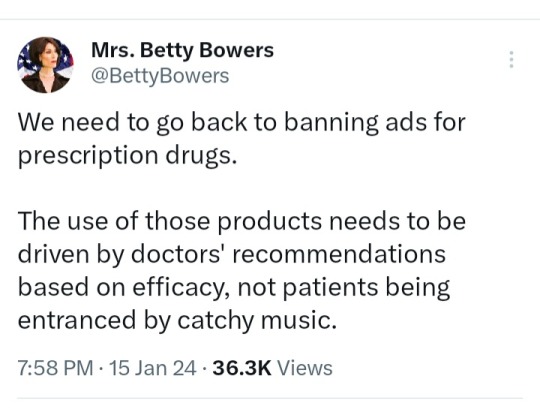

( sickening. )
#big pharma#tv commercials#prescription drugs#commercials#think for yourself#question everything#ban prescription drug ads
581 notes
·
View notes
Text

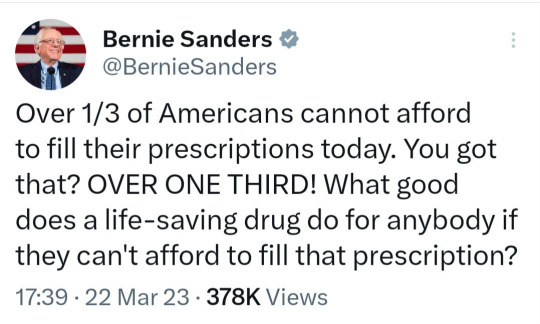
Source
#health#health care#news#bernie sanders#progressive#medicare for all#capitalism#prescription drugs#big pharma#government#the left
2K notes
·
View notes
Text
Uncle Sam paid to develop a cancer drug and now one guy will get to charge whatever he wants for it

Today (Oct 19), I'm in Charleston, WV to give the 41st annual McCreight Lecture in the Humanities. Tomorrow (Oct 20), I'm at Charleston's Taylor Books from 12h-14h.

The argument for pharma patents: making new medicines is expensive, and medicines are how we save ourselves from cancer and other diseases. Therefore, we will award government-backed monopolies – patents – to pharma companies so they will have an incentive to invest their shareholders' capital in research.
There's plenty wrong with this argument. For one thing, pharma companies use their monopoly winnings to sell drugs, not invent drugs. For every dollar pharma spends on research, it spends three dollars on marketing:
https://www.bu.edu/sph/files/2015/05/Pharmaceutical-Marketing-and-Research-Spending-APHA-21-Oct-01.pdf
And that "R&D" isn't what you're thinking of, either. Most R&D spending goes to "evergreening" – coming up with minor variations on existing drugs in a bid to extend those patents for years or decades:
https://www.ncbi.nlm.nih.gov/pmc/articles/PMC3680578/
Evergreening got a lot of attention recently when John Green rained down righteous fire upon Johnson & Johnson for their sneaky tricks to prevent poor people from accessing affordable TB meds, prompting this excellent explainer from the Arm and A Leg Podcast:
https://armandalegshow.com/episode/john-green-part-1/
Another thing those monopoly profits are useful for: "pay for delay," where pharma companies bribe generic manufacturers not to make cheap versions of drugs whose patents have expired. Sure, it's illegal, but that doesn't stop 'em:
https://www.ftc.gov/news-events/topics/competition-enforcement/pay-delay
But it's their money, right? If they want to spend it on bribes or evergreening or marketing, at least some of that money is going into drugs that'll keep you and the people you love from enduring unimaginable pain or dying slowly and hard. Surely that warrants a patent.
Let's say it does. But what about when a pharma company gets a patent on a life-saving drug that the public paid to develop, test and refine? Publicly funded work is presumptively in the public domain, from NASA R&D to the photos that park rangers shoot of our national parks. The public pays to produce this work, so it should belong to the public, right?
That was the deal – until Congress passed the Bayh-Dole Act in 1980. Under Bayh-Dole, government-funded inventions are given away – to for-profit corporations, who get to charge us whatever they want to access the things we paid to make. The basis for this is a racist hoax called "The Tragedy Of the Commons," written by the eugenicist white supremacist Garrett Hardin and published by Science in 1968:
https://memex.craphound.com/2019/10/01/the-tragedy-of-the-commons-how-ecofascism-was-smuggled-into-mainstream-thought/
Hardin invented an imaginary history in which "commons" – things owned and shared by a community – are inevitably overrun by selfish assholes, a fact that prompts nice people to also overrun these commons, so as to get some value out of them before they are gobbled up by people who read Garrett Hardin essays.
Hardin asserted this as a historical fact, but he cited no instances in which it happened. But when the Nobel-winning Elinor Ostrom actually went and looked at how commons are managed, she found that they are robust and stable over long time periods, and are a supremely efficient way of managing resources:
https://pluralistic.net/2023/05/04/analytical-democratic-theory/#epistocratic-delusions
The reason Hardin invented an imaginary history of tragic commons was to justify enclosure: moving things that the public owned and used freely into private ownership. Or, to put it more bluntly, Hardin invented a pseudoscientific justification for giving away parks, roads and schools to rich people and letting them charge us to use them.
To arrive at this fantasy, Hardin deployed one of the most important analytical tools of modern economics: introspection. As Ely Devons put it: "If economists wished to study the horse, they wouldn’t go and look at horses. They’d sit in their studies and say to themselves, ‘What would I do if I were a horse?’"
https://pluralistic.net/2022/10/27/economism/#what-would-i-do-if-i-were-a-horse
Hardin's hoax swept from the fringes to the center and became received wisdom – so much so that by 1980, Senators Birch Bayh and Bob Dole were able to pass a law that gave away publicly funded medicine to private firms, because otherwise these inventions would be "overgrazed" by greedy people, denying the public access to livesaving drugs.
On September 21, the NIH quietly published an announcement of one of these pharmaceutical transfers, buried in a list of 31 patent assignments in the Federal Register:
https://public-inspection.federalregister.gov/2023-20487.pdf
The transfer in question is a patent for using T-cell receptors (TCRs) to treat solid tumors from HPV, one of the only patents for treating solid tumors with TCRs. The beneficiary of this transfer is Scarlet TCR, a Delaware company with no website or SEC filings and ownership shrouded in mystery:
https://www.bizapedia.com/de/scarlet-tcr-inc.html
One person who pays attention to this sort of thing is James Love, co-founder of Knowledge Ecology International, a nonprofit that has worked for decades for access to medicines. Love sleuthed out at least one person behind Scarlet TCR: Christian Hinrichs, a researcher at Rutgers who used to work at the NIH's National Cancer Institute:
https://www.nih.gov/research-training/lasker-clinical-research-scholars/tenured-former-scholars
Love presumes Hinrichs is the owner of Scarlet TCR, but neither the NIH nor Scarlet TCR nor Hinrichs will confirm it. Hinrichs was one of the publicly-funded researchers who worked on the new TCR therapy, for which he received a salary.
This new drug was paid for out of the public purse. The basic R&D – salaries for Hinrichs and his collaborators, as well as funding for their facilities – came out of NIH grants. So did the funding for the initial Phase I trial, and the ongoing large Phase II trial.
As David Dayen writes in The American Prospect, the proposed patent transfer will make Hinrichs a very wealthy man (Love calls it "generational wealth"):
https://prospect.org/health/2023-10-18-nih-how-to-become-billionaire-program/
This wealth will come by charging us – the public – to access a drug that we paid to produce. The public took all the risks to develop this drug, and Hinrichs stands to become a billionaire by reaping the rewards – rewards that will come by extracting fortunes from terrified people who don't want to die from tumors that are eating them alive.
The transfer of this patent is indefensible. The government isn't even waiting until the Phase II trials are complete to hand over our commonly owned science.
But there's still time. The NIH is about to get a new director, Monica Bertagnolli – Hinrichs's former boss – who will need to go before the Senate Health, Education, Labor and Pensions Committee for confirmation. Love is hoping that the confirmation hearing will present an opportunity to question Bertagnolli about the transfer – specifically, why the drug isn't being nonexclusively licensed to lots of drug companies who will have to compete to sell the cheapest possible version.

If you'd like an essay-formatted version of this post to read or share, here's a link to it on pluralistic.net, my surveillance-free, ad-free, tracker-free blog:
https://pluralistic.net/2023/10/19/solid-tumors/#t-cell-receptors

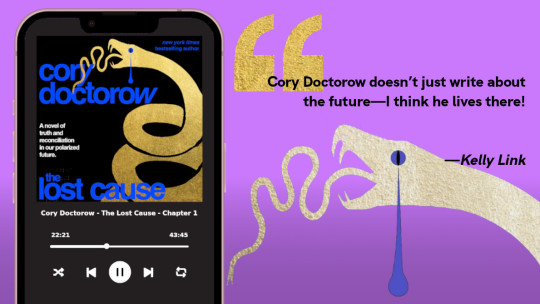
My next novel is The Lost Cause, a hopeful novel of the climate emergency. Amazon won't sell the audiobook, so I made my own and I'm pre-selling it on Kickstarter!
#pluralistic#pharma#incentives dont matter#incentives matter#drugs#uspto#nih#national institutes of health#cancer#patents#kei#knowledge ecology international#james love#jamie love#bayh-dole#bayh-dole act#tcr#scarlet tcr#t-cell receptor#Christian Hinrichs#entrepreneurial state#human papillomavirus#hpv#solid tumors#monopolies
552 notes
·
View notes
Text


Pharma shouldve been in TFP if only to make the Synthetic Energon problem an even Bigger problem
#my art#transformers#tw syringe#ratchet#pharma#tfp#transformers prime#humanformers#maccadam#maccadams#whats ratchet and pharma's ship name#idk#doctors of doom frfr#I LOOOOVE RATCHET ON SYNTH EN<333#I LOVE HIS SMUGNESS AND COCKINESS AND#ARCEE. IF YOURE NOT GONNA APPRECIATE HIM HITTING ON YOU. MOVE OVER. ITS MY TURN#He's walking out PREGNANT.#idk what other tw i should put but even tho im horribly terrified of syringes . synth en ratchet is my everything#do drugs ratchet<33#everyone else DO NOT DO DRUGS#OBLIGATORY PLEASE DONT DO DRUGS#only ratchet should <3#he should do all the drugs
64 notes
·
View notes
Text
I’ll be a doctor one day and all the pharmaceutical reps will be waiting in the lobby for hours begging for a chance to speak with me to push their samples to patients and I’ll have pharmaceutical companies buying free lunch for my employees every day just so they can sit w me at lunch and speak to me and I’ll also have a housewife/husband but instead it’ll be an office wife/husband and they’ll run the managerial aspects of my hospital for me . Among other things
#And that’s a VOW#Also depending on how involved I’ll be in the biotech industry maybe I’ll also be a medical director and spearhead sick research projects#I’ll def be research leaning I really do love it#But I don’t wanna do that shit on the sidelines like when I’m older I want to be directing that shit#I for sure wanna be involved in drug discovery I think it’s so fun#So many goals 😞😞#Also I’ll have a high turnover for patients and patients won’t wait forever but my staff will still be pleasant and not pushy#I also hate the red tape around healthcare services so they’ll fs be a lot more accessible#I have a lot of goals that are patient oriented I was just trying to sound conceited but it goes beyond that tbh#It’s rly funny watching pharma reps grovel but there’s more to life than being groveled for
74 notes
·
View notes
Text
The fact that people fanonize Pharma as a functionist so much when Ratchet is right there is so fucking stupid it borders into hilarity honestly. It's like the fanon equivalent of someone next to you saying a slur and everyone else thinking you said it
Ratchet will be like "blah blah forged medic hands are the best blah blah I'm not saying that all the best medics are forged I'm just saying forged hands have a natural superiority over non forged hands blah blah once my hands stop working someone needs to take me out back and shoot me like a crippled dog"
Pharma: "hey fuckface you stole my hands and now my hatred for you is personal because you violated my body"
The fandom: "Holy FUCK Pharma is so racist look at him being obsessed with forged medic hands being the best!!!!"
Me, every other Pharma fan, anyone with reading comprehension:

#obv fictional robot racism is not an issue but it's so funny to me ppl want pharma (a minority in universe)#to be a bigot soooo bad to justify making him evil and unredeemable and paint all his motivation as bad#but at the same time dratchet (bc it's mostly Dratchet shippers who do this)#has ratchet shipped with a formerly poor ghetto living drug addict and oh#people know what oppression is and are so woke when they talk about DRIFT#and can go into all sorts of nuances about police brutality and wars on drugs etc etc#but when pharma is there 'famous for being forged' and a medic and a jet#when jets are famously restricted to only military or freight/cargo#and other scientific class jets like jetfire needed exemptions to get to where they were#no one outside of dedicated Pharma fans has jackshit to say about pharma being in an oppressed class#instead we just headcanon him as a functionist bigoted poor people and drug addict hating asshole#bc of course pharma only exists in relation to dratchet and we have to make him hate drift for existing#and we have to deflect from the fact that ratchet is the one who has actually made bigoted statements#so yeah just erase the fact that Pharma is literally a minority who needed permission to be allowed to be a doctor#he's totally a functionist yall#you can tell bc he's angry about how ratchet had enough time to take his hands and put them on himself#but not enough time to like go look or send a team to verify pharma was dead#oh yeah dont forget we have to throw on some homophobic stereotypes while we're here#about how he's a crazy stalker bc of his unrequited gay lust#and also ableism by writing him as a freak who's evil bc he's crazy#squiggposting#pharma apologism
34 notes
·
View notes
Text

#rfkjr#big pharma#pharmaindustry#drug companies#donald trump#senate#us senate#president trump#trump#democrats#donald j. trump#fox news#elon musk#california#government corruption#bribes#lobbyists#ozempic#fitness#make america healthy again#healthy living#workout#gym#gym life#dieting#diet#keto#weight loss#overweight#tulsi gabbard
24 notes
·
View notes
Text
"The Biden administration on Thursday [August 15, 2024] released prices for the first 10 prescription drugs that were subject to landmark negotiations between drugmakers and Medicare, a milestone in a controversial process that aims to make costly medications more affordable for older Americans.
The government estimates that the new negotiated prices for the medications will lead to around $6 billion in net savings for the Medicare program in 2026 alone when they officially go into effect, or 22% net savings overall. That is based on the estimated savings the prices would have produced if they were in effect in 2023, senior administration officials told reporters Wednesday.
The Biden administration also expects the new prices to save Medicare enrollees $1.5 billion in out-of-pocket costs in 2026 alone.
“For so many people, being able to afford these drugs will mean the difference between debilitating illness and living full lives,” Chiquita Brooks-LaSure, administrator for the Centers for Medicare & Medicaid Services, told reporters. “These negotiated prices. They’re not just about costs. They are about helping to make sure that your father, your grandfather or you can live longer, healthier.”
It comes one day before the second anniversary of President Joe Biden’s signature Inflation Reduction Act, which gave Medicare the power to directly hash out drug prices with manufacturers for the first time in the federal program’s nearly 60-year history.
Here are the negotiated prices for a 30-day supply of the 10 drugs, along with their list prices based on 2023 prescription fills, according to a Biden administration fact sheet Thursday.
What Medicare and beneficiaries pay for a drug is often much less than the list price, which is what a wholesaler, distributor or other direct purchaser paid a manufacturer for a medication before any discounts...

The administration unveiled the first set of medications selected for the price talks in August 2023, kicking off a nearly yearlong negotiation period that ended at the beginning of the month.
The final prices give drugmakers, which fiercely oppose the policy, a glimpse of how much revenue they could expect to lose over the next few years. It also sets a precedent for the additional rounds of Medicare drug price negotiations, which will kick off in 2025 and beyond.
First 10 drugs subject to Medicare price negotiations
Eliquis, made by Bristol Myers Squibb, is used to prevent blood clotting to reduce the risk of stroke.
Jardiance, made by Boehringer Ingelheim and Eli Lilly, is used to lower blood sugar for people with Type 2 diabetes.
Xarelto, made by Johnson & Johnson, is used to prevent blood clotting, to reduce the risk of stroke.
Januvia, made by Merck, is used to lower blood sugar for people with Type 2 diabetes.
Farxiga, made by AstraZeneca, is used to treat Type 2 diabetes, heart failure and chronic kidney disease.
Entresto, made by Novartis, is used to treat certain types of heart failure.
Enbrel, made by Amgen, is used to treat autoimmune diseases such as rheumatoid arthritis.
Imbruvica, made by AbbVie and J&J, is used to treat different types of blood cancers.
Stelara, made by Janssen, is used to treat autoimmune diseases such as Crohn’s disease.
Fiasp and NovoLog, insulins made by Novo Nordisk.
In a statement Thursday, Biden called the new negotiated prices a “historic milestone” made possible because of the Inflation Reduction Act. He specifically touted Vice President Kamala Harris’ tiebreaking vote for the law in the Senate in 2022.
Harris, the Democratic presidential nominee, said in a statement that she was proud to cast that deciding vote, adding there is more work to be done to lower health-care costs for Americans.
“Today’s announcement will be lifechanging for so many of our loved ones across the nation, and we are not stopping here,” Harris said in a statement Thursday, noting that additional prescription drugs will be selected for future rounds of negotiations."
-via CNBC, August 15, 2024
#public health#healthcare#united states#us politics#biden#harris#kamala harris#medicare#medicaid#healthcare accessibility#prescription drugs#big pharma#insulin#good news#hope
3K notes
·
View notes
Text
In case you didn't know this 👆 If you listen to side effects, they have a drug for them to. 🤔
#pay attention#educate yourselves#educate yourself#knowledge is power#reeducate yourself#reeducate yourselves#think about it#think for yourselves#think for yourself#do your homework#do some research#do your own research#ask yourself questions#question everything#drugs#big pharma#poisonous#poison#stop#corruption
218 notes
·
View notes
Text
i know this is very 2004 internet atheist of me, but god alternative medicine gives me such a headache sometimes. "let's take this nonsense practice developed by a civil war doctor back when we thought ghosts caused masturbation and try to professionalize it and make it a Serious Discipline." and then it becomes insanely popular here because Germans fucking love bullshit non-medicine and are terrified of pills.
#i think i'm becoming negatively polarized in favor of big pharma#my new bit is gonna be drugs are good actually#and we should all be on loads more
215 notes
·
View notes
Text
Trump Supporters Mess Around... Find Out The HARD WAY
youtube
If you don't feel like watching the video - they basically talk about how Trump rescinded Joe biden's policy on prescription drug prices. Cuz you know got to make sure big pharma gets their money... I hate this fucking world.
#fuck trump#trump#trump cult#republicans#prescription drug prices#joe biden#fuck maga#anticapitalism#big pharma#fuck big pharma#Youtube
14 notes
·
View notes
Text
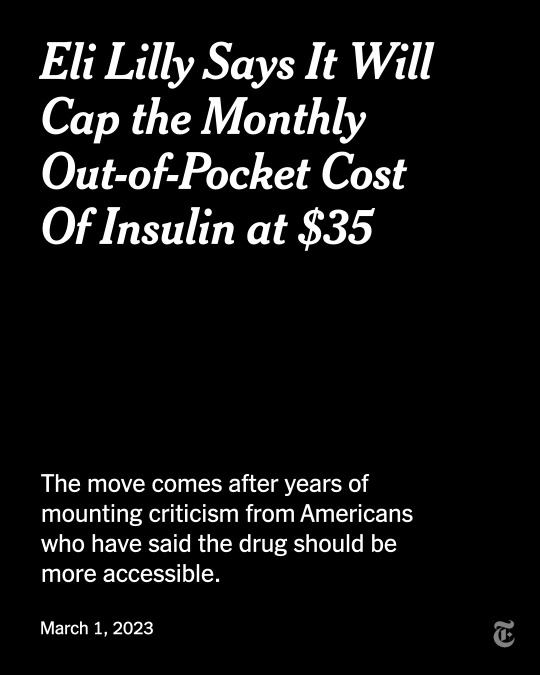
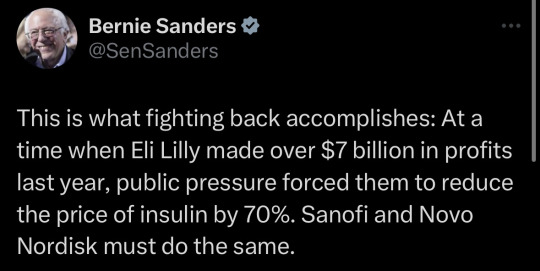
Source
778 notes
·
View notes